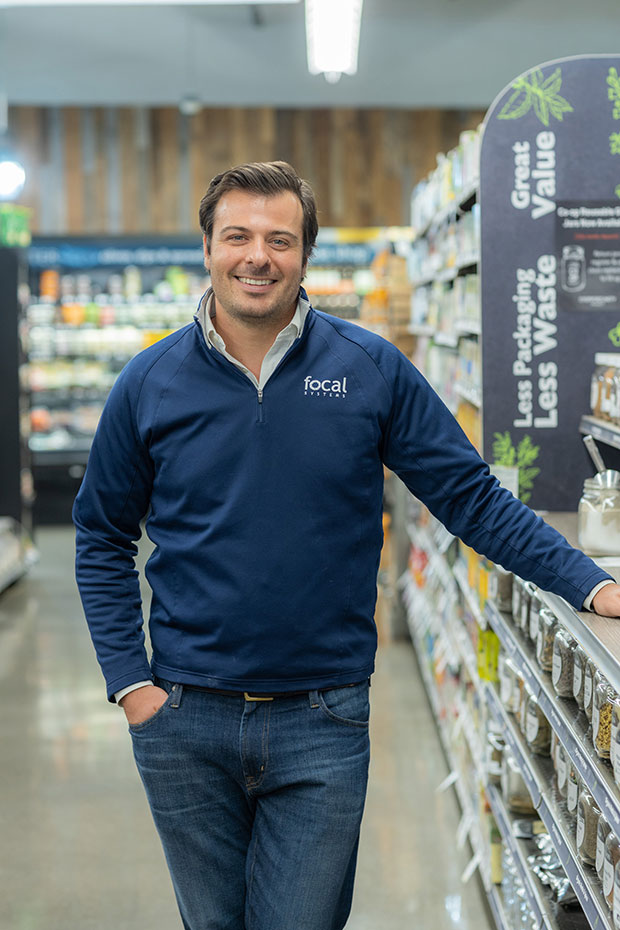Since the rollout of ChatGPT late last year, it seems like every day brings a new story about the latest breakthrough in generative AI. GenAI will impact all industries with task specific use cases, and in the grocery world as well. This is already changing the way grocers operate and resulting in drastically better customer experiences which will double profits for retailers that are aggressive on adoption, writes Francois Chaubard, CEO & founder of Focal Systems.
 For instance, grocery shoppers likely have experienced the pain of their desired product being out of stock as labour shortages were rampant and over 75% of products saw a supply chain disruption the last two years. Upon asking a store worker to check the back of the store for the item, they may have heard, “Sorry, we don’t have anything back there.” While this once was a common problem, it is primed to become a thing of the past thanks to AI.
For instance, grocery shoppers likely have experienced the pain of their desired product being out of stock as labour shortages were rampant and over 75% of products saw a supply chain disruption the last two years. Upon asking a store worker to check the back of the store for the item, they may have heard, “Sorry, we don’t have anything back there.” While this once was a common problem, it is primed to become a thing of the past thanks to AI.
Generative AI already has the power to help grocers improve availability, sales, customer experience, and net margins by 100% or more. It can automatically generate per-store optimised planograms so grocers know where to place products on shelves in order to maximise sales and minimise labour. We have seen this increase sales in some categories by as much as 15%. It can produce store-optimised schedules for stockers and cashiers so grocers can have workers at the exact time they need them and prioritise the most important outs first which increase sales per labour hour by as much as 18%. It can also write orders based on real-time visual shelf conditions and backroom conditions to avoid over- or under-ordering which improves availability by 3-5% and reduces backstock and shrink by half or more. There are thousands of stores that are using computer vision and generative AI to do this today.
With these tools in hand, it is like having the best store manager of all time, at one hundredth of the cost, for every store, that applies lessons learned from one store to all the others instantly. And as AI keeps advancing, its applications within the grocery and retail sectors are set to multiply, transforming various aspects of the industry:
1. GenAI for identifying shopping preferences: Imagine entering a store where AI directs you to your usual items or proposing new products that match your taste. It could even anticipate your requirements based on previous purchases and the current stock levels at home, taking the guesswork out of shopping.
2. GenAI for refining store layouts and designs: By analysing customer traffic patterns, AI could optimise store configurations to boost sales and enhance the overall customer experience. This would lead to a more streamlined shopping experience, allowing customers to find what they need quickly and effortlessly. The data generated from these analyses could also inform future store expansions and remodels, ensuring that retailers continue to meet the evolving needs of their customers.
3. GenAI for forecasting and demand planning: By examining past sales data and other factors, AI can predict demand for specific products with remarkable accuracy, helping retailers manage their supply chains more effectively and avoid stockouts and overstocking situations. This would also contribute to reducing waste and improving overall sustainability in the grocery and retail sectors, benefiting not only the business but also the environment.
4. GenAI for customer service: Chatbot technology and other AI-driven customer service tools can efficiently address customer enquiries and complaints, freeing employees to focus on delivering a more personalised and engaging in-store experience. As a result, customer satisfaction could see a significant boost, fostering brand loyalty and generating repeat business.
5. Improving loss prevention and security: By analysing security footage in real-time, AI can detect potential shoplifting incidents, employee theft, and other security concerns, notifying store management and security personnel to take appropriate action. This would ultimately create a safer and more secure shopping environment, instilling confidence in both customers and employees.
6. GenAI for staffing, scheduling, and resource allocation: By examining data on customer traffic, sales trends, and employee performance, AI-driven systems can create more efficient work schedules, ensuring that stores are adequately staffed during peak hours, and resources are allocated where they are needed the most.
7. GenAI for e-commerce: The integration of AI into the e-commerce aspect of grocery and retail is also projected to grow. AI can be employed to optimise product recommendations, enhance search functionality, and personalise marketing efforts to drive online sales and customer loyalty. This could lead to a more seamless online shopping experience, further solidifying customer relationships with their preferred retailers.
GenAI in the grocery and retail sectors is already yielding promising outcomes. As this technology continues to evolve and mature, we can anticipate it playing an increasingly essential role in driving efficiency, sustainability, and improved customer experiences. The challenge for retailers and grocers will be to stay ahead of the curve, constantly adapting and embracing these AI-driven innovations to remain competitive in the ever-shifting landscape of the grocery and retail industries. Embracing AI will be key to not only surviving but also thriving in this competitive market.





Comments are closed.